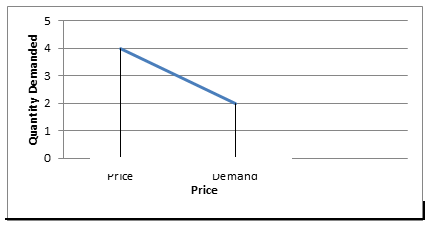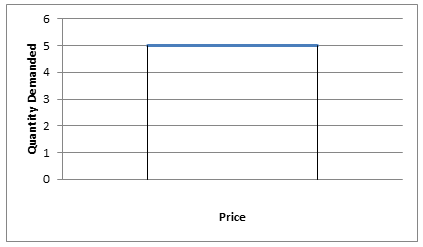Updated November 15, 2023

Difference Between Elastic Demand vs Inelastic Demand
In economics, the Elasticity of demand is an important concept of demand. Demand can be segregated between elastic, inelastic, or unitary demand. The elasticity of demand refers to the degree to which supply and demand respond to a change in another factor, such as price, income level, substitute availability, etc. The term elasticity of demand is the change in one or more than one determinant that may have little or no change in the demand for the product. Inelastic demand means the slight or no change in quantity demanded when the commodity’s price changes (either reduced or increased). Percentage change in price.
Elastic Demand
Elastic demand means a substantial change in quantity demanded when the commodity’s price changes (either reduced or increased). The need for a product is considered price elastic whenever the ratio of the percentage change in demand divided by the percentage change in price is greater than one. Demand for the product depends upon the price of a good, income (purchasing power) of the buyer, price of related goods, tastes, and preferences of the buyer, which are called determinants of demand.
Demand is elastic for luxurious commodities due to an infrequent purchase of these commodities. When the prices of the commodity increase, the demand for the quantity will decrease because people will not be willing to spend more money on this product. At the same time, when the price of the commodity decreases, the demand will increase. Here, the Price factor will lead to the quantity of consumption of the commodity or consumption of other available substitutes in the market decrease or increase. In terms of revenues, increased commodity prices will decrease the demand, leading to a decrease in revenues and vice-versa.
Graphically, the Elasticity of demand is represented by the price and quantity demanded. Inelastic demand, Quantity demand fluctuation is more concerning the price change. When prices of the commodity will increase, the demand will decrease and vice-versa. A more elastic curve will be horizontal.

Inelastic Demand
Inelastic demand means the slight or no change in quantity demanded when the commodity’s price changes (either reduced or increased). Percentage change in price. The demand for a product is considered price elastic whenever the ratio of the percentage change of demand divided by the percentage change in price is less than one. Here, the Demand determinants impact will be low or negligible due to the nature of consumption. Demand for necessary commodities is inelastic due to the frequent purchase of these commodities for basic needs by the consumer. The demand for quantity will be fine with the decrease or increase in the price of these commodities. i.e., shops, food grains, oil, petrol, etc.
Inelastic demand for the commodity will not lead to more revenue changes due to the stable demand for the commodity. Graphically, Inelastic demand and quantity demand fluctuation will be negligible or not concerning the price difference. A more elastic curve will be Vertical.

Classification of degrees of elasticity or Elasticity of Demand:
- Relatively more elastic: Elasticity coefficient is more than 1.
- Relatively less elastic: Elasticity coefficient is less than 1.
- Unitary elasticity: The elasticity coefficient is equal to 1.
- Perfectly elastic: Elasticity coefficient is infinity, and
- Perfectly inelastic: Elasticity coefficient is zero.
Elastic Demand vs Inelastic Demand Infographics
Below is the top 7 difference between Elastic Demand vs Inelastic Demand:
Key Differences Between Elastic Demand vs Inelastic Demand
Both Elastic Demands vs Inelastic Demand are popular choices in the market; let us discuss some of the major differences:
- Elastic demand means a significant change in quantity demanded when the small price changes (Either reduced or increased). Inelastic demand means a small change in the amount demanded when the small price changes (Either reduced or increased).
- The elasticity of demand can be calculated as Elastic demand means a percentage change in the quantity of demand is more than 1 concerning the percentage change in price, and inelastic demand means a percentage change in the quantity of demand is less than 1 concerning the percentage change in price.
- In a graphical presentation, the Elastic demand curve will be shallow, and the inelastic demand curve will be steep.
- Inelastic demand, demand determinates will impact the demand for the commodity, but in inelastic demand, demand determinants will have negligible or no impact on the demand for the product.
- Luxurious commodities have elastic demand, and necessity commodities have inelastic demand.
- Inelastic demand occurs when prices increase, and revenues decrease, and vice-versa. However, in inelastic demand, the price will not significantly impact revenue.
- Inelastic demand, products or commodities are more price sensitive, whereas inelastic demand, products or commodities are less price sensitive.
Head To Head Comparisons Between Elastic Demand vs Inelastic Demand
Below is the topmost Comparison between Elastic Demand vs Inelastic Demand:
| The Basis of Comparison |
Elastic Demand |
Inelastic Demand |
| Meaning | Elastic demand means a significant change in quantity demanded when the small price gets changed (Either reduced or increased) | Inelastic demand means, small or no change in quantity demanded when the small price gets changed (Either reduced or increased). |
| Elasticity coefficient | More than or equal to 1 | Less than 1 |
| Graph Curve | Shallow | Steep |
| Price and total revenue | It represents the opposite direction | It represents the same direction |
| Commodities | Luxury products | Necessary products |
| Price sensitivity | More | Less |
| Availability of substitute | A substitute for the product will be available. | Less or no substitute is available. |
Conclusion
The elasticity of demand plays a major role in determining the demand for the product/commodity concerning the price change. The commodity with more substitutes will have elastic demand due shifting of a customer from one product to another. A commodity with no or fewer substitutes will have inelastic demand due to the unavailability of options for the consumer. Necessary commodities always have superior demand due to consumers’ spending because consumers spend a major portion of their income on necessary commodities.
Recommended Articles
This has been a guide to the top difference between Elastic Demand vs Inelastic Demand. Here we also discuss the Elastic Demand vs Inelastic Demand key differences with infographics and a comparison table. You may also have a look at the following articles to learn more –


